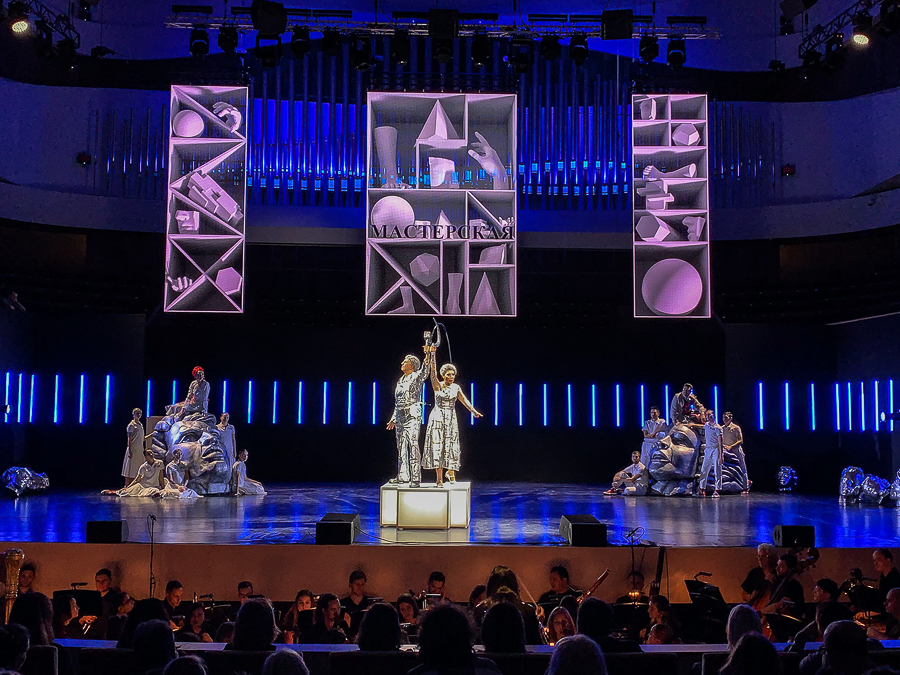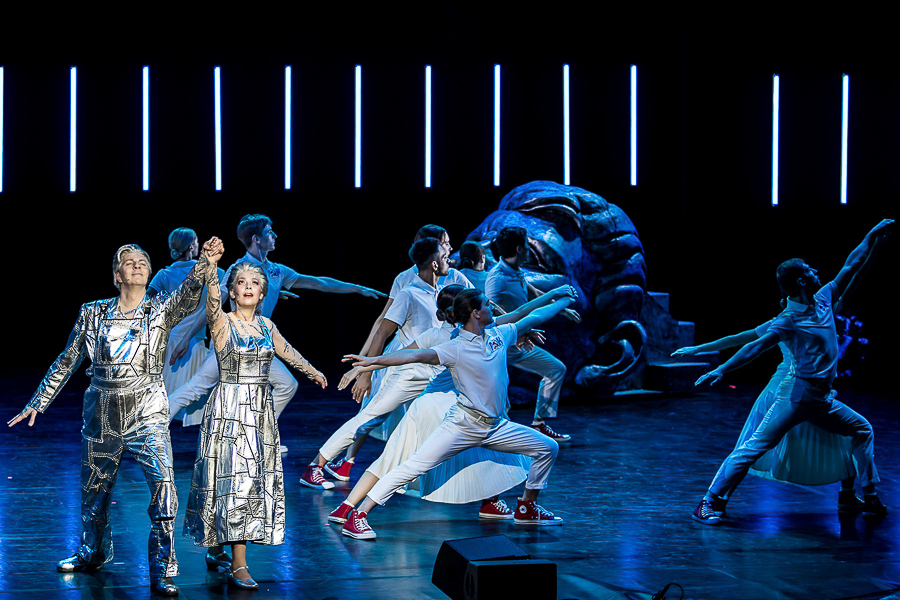In Moscow for performances of The Worker and Kolkhoz Woman a comic opera by Pavel Kaplevich which stunned and amazed critics and the crowds alike during performances at the Zaryadye Concert Hall, Astera’s wireless LED Titan Tubes helped the action to come alive onstage.
The opera is dedicated to the history of one Russia’s most famous monuments The Worker and Kolkhoz Woman, a 24.5-metre-high sculpture by Vera Mukhina, renowned globally as an example of socialist realism and art deco. Two figures – male and female – are leaning forward holding a hammer and sickle above their heads.
The work was designed for the Soviet Pavilion at the 1937 World’s Fair in Paris and was subsequently moved to Moscow. It is instantly recognizable as a powerful Soviet-era symbol.
2019 marks the 130th anniversary of Vera Mukhina’s birthday and the 80th anniversary of the monument’s ‘home’ at the Exhibition of Achievements of the National Economy (VDNKh) in Moscow.
In the opera version, Worker and the Kolkhoz Woman come to life as two real workers who get packed up and sent to Paris for the Fair, where they reassume their poses and engage in a series of bizarre and surreal adventures and encounters … including with Marlene Dietrich and Pablo Picasso.
Lighting designer Alexander Krasnolutsky created a distinctive look and style for the show utilizing a conventional lighting rig, LED screens and the 60 x Astera Titan Tubes that were a central element to the performance.
Alexander explained that he could not work with traditional beam lights as the Zaryadye Concert Hall itself has high ambient light levels and the use of haze is prohibited, so lighting designers cannot use popular techniques like beam technology.
However, contending with such challenging conditions plus the LED screens upstage, he saw nothing but new possibilities … which fired him up to take a different path in maximizing the scenic background created with the Titan Tubes.
“The Titans conveyed the mood of the moment as well as highlighting the images of specific characters throughout the opera,” he explained. The Titan Tubes were placed inside a black cabinet mounted about 2 metres off the floor which wrapped around the back and two sides of the stage in an arc.
The black cabinet provided maximum contrast and gave the impression the Tubes were floating in the air! Inside the cabinet, the Titan Tubes were fixed equidistant to each other, resulting in a broad strip of bright, colourful, symmetrically positioned vertical lines. This striking geometry worked brilliantly as a visual treatment.
Alexander worked closely with video designer Ilya Shagalov to create overall moods and ambience as the different scenes unfolded. Ilya set the general tones while Alexander worked on lighting the many details in each scene and also on drawing in the audience and making the viewing experience more immersive.
“Using the Titan Tubes in this way solved several issues,” he explained. “The units are very bright and don’t get lost in the luminosity of the screens. They provide another layer and dimension of visuality … and sometimes I even had to dial them down!”
Prior to working on this production Alexander had used Titan Tubes on various projects and loved all the features and the general versatility.
He appreciates the high CRI and “great range of colour temperatures” which also make them ideal for television and film applications. He thinks the colour palette produced by a combination of the RGB + Amber and Mint LEDs is “beautiful”, and this was very handy in setting some unique backgrounds to accent parts of the plot.
The bright blue sky of Paris was continued by pale blue Titan Tube lines; different colour white stripes reflected the monochrome gloominess of the Nazi era during World War II. The Titan Tubes also supported the figurative red lights of the Kremlin walls and even the goldish orange shimmering of the ruby stars – all of these detailed effects were fluid and effortless using the fixtures.
Alexander notes that the “well-thought-out functionality” and battery power supply of the Tubes is a great tribute to the practical and realistic thinking of Astera’s product developers, and having the option of both battery or wired operation doesn’t compromise the brightness and quality of the light in any way. “Even during a show or event lasting several hours, when the battery charge is lower, the tubes don’t deteriorate, and for this production they performed flawlessly just as we planned.”
The Worker and Kolkhoz Woman received rave reviews for its excellent cast including Sergey Mazaev as Stalin and the legendary Ilze Liepa who brilliantly delivered the Marlene-Picasso dance sequence in a human split-screen style.
More information on the Astera website









